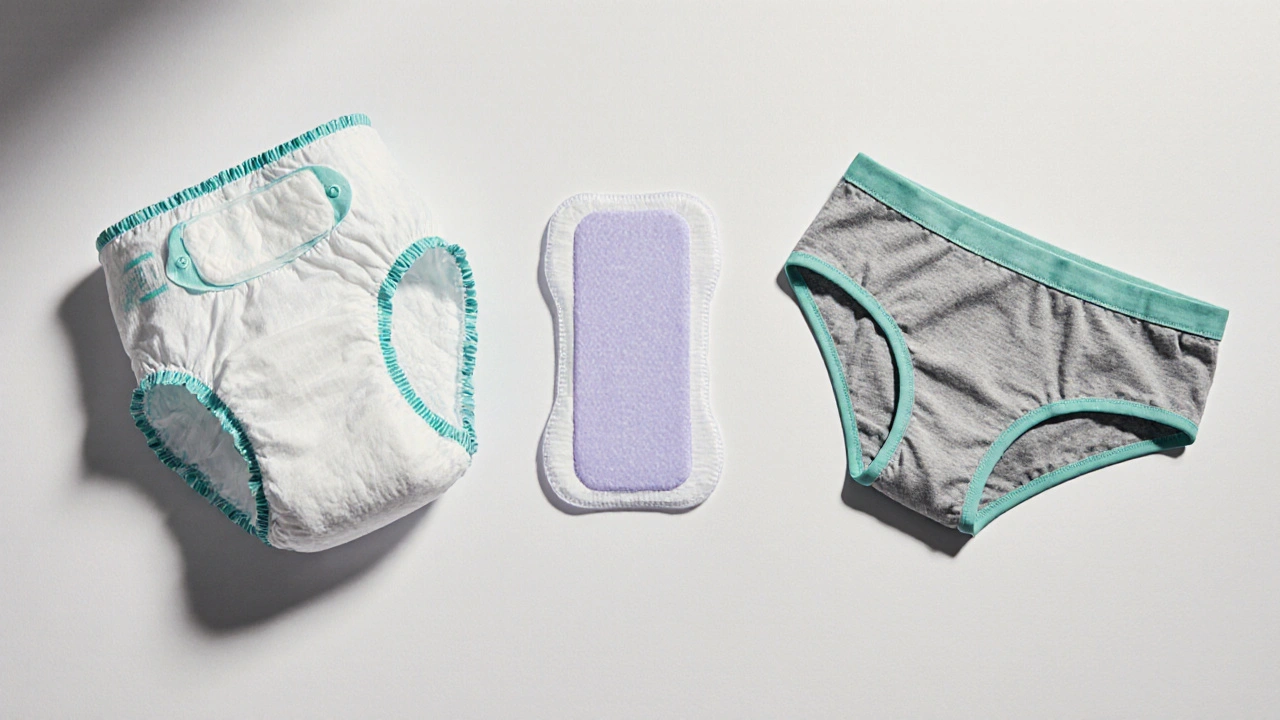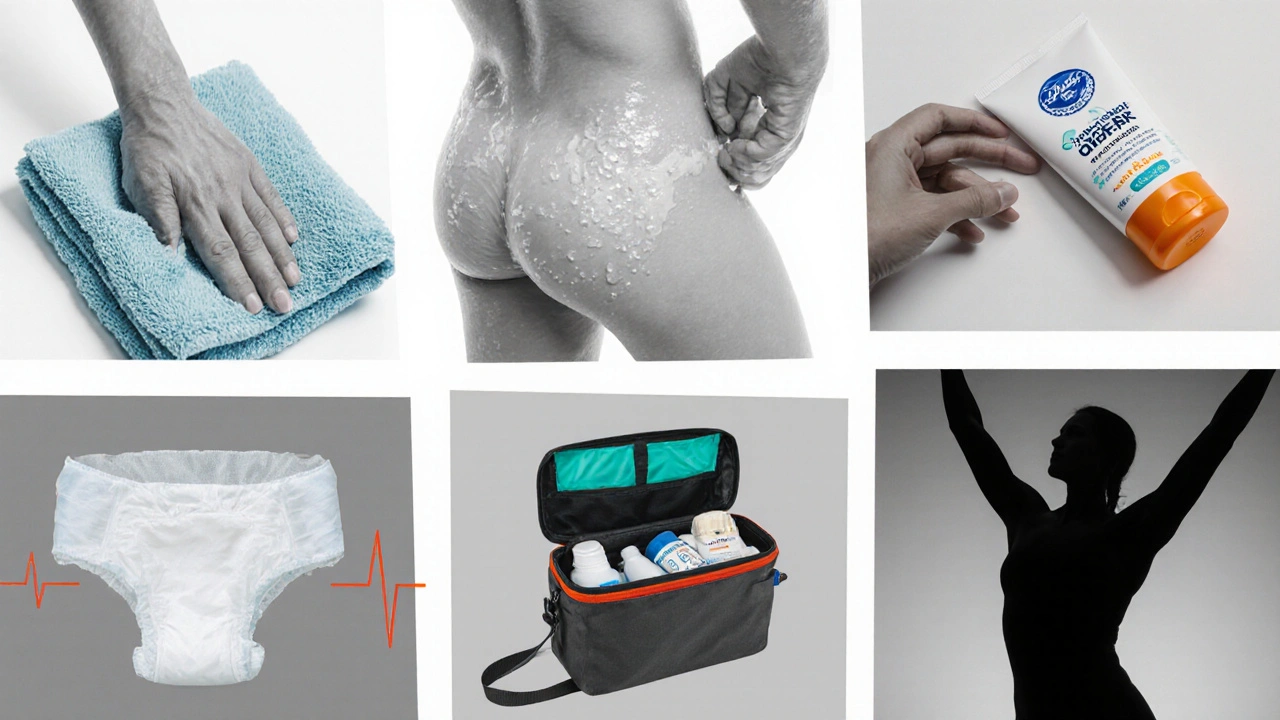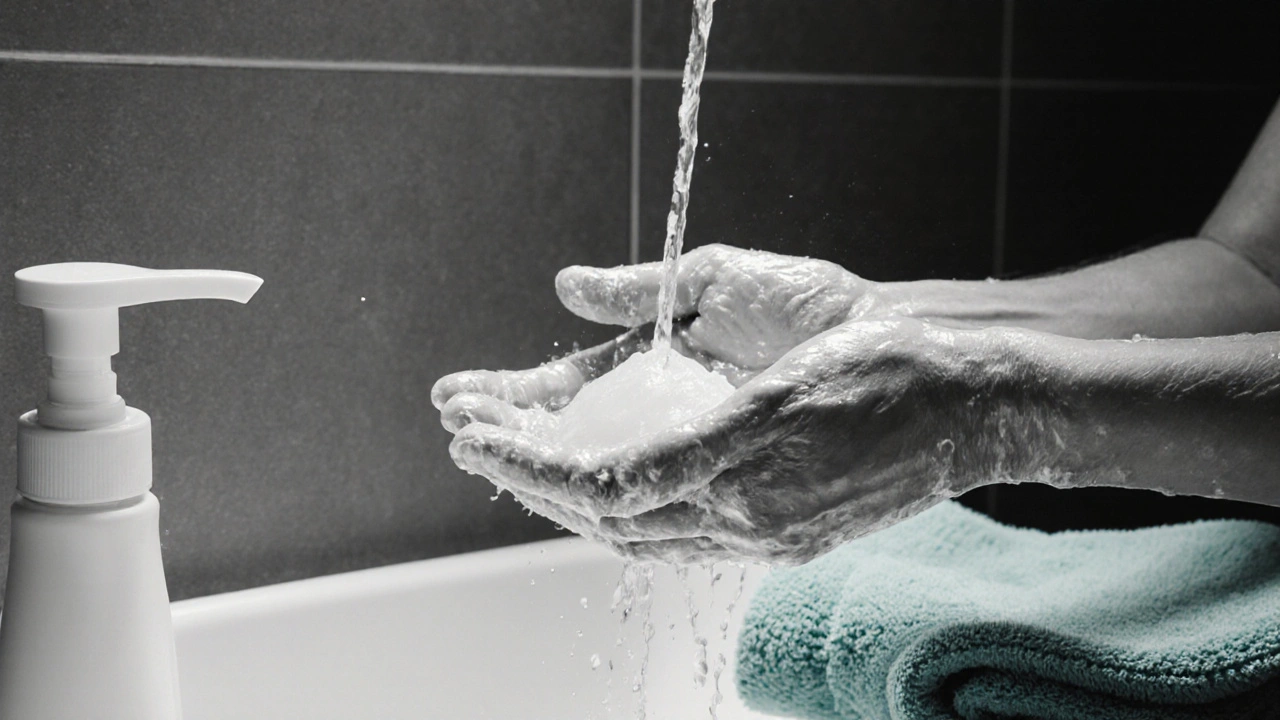When dealing with Incontinence is the involuntary loss of bladder or bowel control, staying clean can feel like a daily battle. The good news is that with the right routine, products, and a few smart habits, you can keep discomfort, skin irritation, and embarrassing smells at bay.
Why Hygiene Matters More Than You Think
Living with urinary or fecal incontinence isn’t just about managing the leak; it’s about protecting the skin, preventing infections, and preserving confidence. Studies from the Australian Institute of Health in 2023 showed that people who follow a structured hygiene plan report 40% fewer skin‑related issues and a noticeable boost in social participation. When moisture sits on the skin for too long, it breaks down the natural barrier, inviting bacterial growth and rashes. That’s why incontinence hygiene should be seen as a cornerstone of overall health, not an after‑thought.
Understanding the Types of Incontinence
Before you can pick the right supplies, know which kind you’re dealing with. The two most common forms are:
- Urinary Incontinence - leakage of urine, ranging from occasional dribbles to larger spills.
- Fecal Incontinence - inability to control bowel movements, which can be especially challenging for skin health.
Each type calls for slightly different product choices and skin‑care steps, but the core hygiene principles stay the same.
Choosing the Right Incontinence Products
Not all products are created equal. Below is a quick comparison of the most popular options available in Australian pharmacies in 2025.
| Product | Absorbency Level | Fit Style | Typical Cost (AU$) | Best For |
|---|---|---|---|---|
| Adult Diapers | High (up to 2000ml) | Brief‑style with elastic waist | 0.90-1.20 per piece | Heavy‑hour leakage, night use |
| Absorbent Pads | Medium (500-800ml) | Insert‑type, fits inside regular underwear | 0.45-0.70 per piece | Light‑to‑moderate daytime leaks |
| Moisture‑Wicking Underwear | Low‑Medium (300-600ml) | Underwear‑style, reversible | 2.50-3.80 per pair | Active lifestyles, discreet wear |
When you’re starting out, it’s wise to buy a small pack of each type, test them for fit and comfort, then settle on the one that feels least intrusive while still keeping you dry.
Step‑by‑Step Daily Hygiene Routine
- Prep the area: Before putting on any product, wash your hands with warm water and mild soap. This prevents transferring germs to the skin.
- Gentle cleansing: Use a pH‑balanced, fragrance‑free wash or hypoallergenic bathing wipes. Avoid harsh soaps that strip natural oils.
- Dry thoroughly: Pat the skin dry with a soft towel. For extra protection, apply a thin layer of a barrier cream that contains zinc oxide or dimethicone - these create a seal against moisture.
- Apply the product: Position the adult diaper or pad snugly, ensuring no folds. A snug but not tight fit stops leaks without restricting blood flow.
- Check and change: Change the product at least every 4‑6hours during the day, and at least once nightly. If you feel any dampness, swap immediately.
- After‑change care: Re‑clean the area, re‑apply barrier cream if needed, and ensure the new product is correctly aligned.
Consistency is the secret sauce. Even a single missed change can lead to skin irritation that spreads quickly.

Skin‑Care Extras to Keep Irritation at Bay
Beyond the basic routine, consider these adjuncts:
- Barrier Creams: Look for products with zinc oxide (10‑15%) or dimethicone. Apply a pea‑size amount after each cleansing.
- Odor Neutralizers: Activated charcoal inserts or spray‑on deodorants help manage smells without masking them with perfume.
- Moisturizers: Once the skin is clean and dry, a lightweight, non‑comedogenic moisturizer can restore the lipid barrier.
- Clothing choices: Breathable cotton underwear and loose‑fitting pants reduce friction and allow air circulation.
These small steps cut down on the risk of dermatitis, fungal infections, and the embarrassment of a noticeable odor.
Lifestyle Hacks That Reduce Leak Frequency
Hygiene isn’t only about what you do after a leak; it’s also about habits that lower the chance of leaking in the first place.
- Pelvic Floor Exercises: Daily Kegel routines strengthen the muscles that control urinary flow. A 2022 physiotherapy trial in Perth showed a 30% reduction in leak episodes after eight weeks of guided Kegels.
- Bladder Diary: Track fluid intake, bathroom trips, and leak incidents for one week. Patterns often emerge, helping you adjust caffeine, alcohol, or fluid timing.
- Timed Voiding: Set a schedule (e.g., every two hours) to empty the bladder even if you don’t feel the urge. This empties the bladder before it becomes over‑distended.
- Weight Management: Excess weight increases pressure on the pelvic floor. Even a modest 5‑kg loss can improve control.
Combine these habits with the hygiene routine for a comprehensive approach that keeps you feeling fresh and confident.
Travel and Out‑of‑Home Tips
Leaving the house can be stressful, but a little prep makes it painless.
- Pack a “hygiene kit”: a small bottle of gentle cleanser, a few bathing wipes, barrier cream, an extra set of adult diapers, and a discreet odor‑neutralizer.
- Identify restroom locations in advance, especially in airports or large venues.
- Carry a waterproof bag for used products - it prevents leaks from contaminating other luggage.
- If you’re staying overnight, request extra supplies from the hotel’s front desk; most major chains are happy to accommodate discretion.
With these steps, you can enjoy outings without worrying about unexpected leaks.

When to Seek Professional Help
Good hygiene covers most everyday scenarios, but certain signs mean it’s time to talk to a doctor or continence nurse:
- Persistent skin redness or sores that don’t heal within a week.
- Leaks that suddenly increase in volume or frequency.
- Painful urination, blood in urine, or a strong foul smell.
- Any sign of a urinary tract infection - fever, chills, or lower‑abdominal pain.
Early intervention can prevent complications and may open up treatment options like medication, pelvic‑floor therapy, or minimally invasive procedures.
Quick Reference Checklist
- Wash hands before and after each product change.
- Use fragrance‑free wipes or a pH‑balanced wash.
- Pat dry, don’t rub.
- Apply zinc‑oxide barrier cream.
- Change product every 4‑6hours.
- Carry a travel kit for outings.
- Track leaks with a bladder diary.
- Do daily Kegel exercises.
- Seek medical advice for skin issues or infection signs.
Frequently Asked Questions
How often should I change my adult diaper?
Aim to change every 4‑6hours during the day and at least once overnight. If the diaper feels damp sooner, swap it immediately to protect the skin.
Can I use baby wipes instead of bathing wipes?
Baby wipes often contain fragrance and harsher preservatives that can irritate adult skin. Choose wipes labeled "hypoallergenic" or "for sensitive skin" to avoid dermatitis.
What’s the best way to prevent odors?
Combine a good changing schedule with an odor‑neutralizing product like activated‑charcoal inserts. Keeping the skin dry and using barrier cream also reduces the bacterial growth that causes smells.
Are there any dietary changes that help with urinary leakage?
Limit caffeine, alcohol, and excess fluid intake close to bedtime. Foods rich in magnesium (like leafy greens and nuts) can support muscle function, but always discuss major diet shifts with your GP.
Should I use the same barrier cream every day?
Yes, apply a thin layer after each wash. Consistency builds a protective film that reduces friction and moisture damage.




Cayla Orahood on 16 October 2025, AT 15:06 PM
It’s astonishing how the very same corporations that profit from disposable adult diapers also fund the research that tells us they are "the best" for skin health. They push a narrative of constant consumption, whispering that only the newest high‑tech moisture‑wicking underwear can save us from embarrassment. Yet the truth is buried under glossy marketing: many of those products contain hidden chemicals that can disrupt the skin’s natural pH. If you scrutinize the ingredient list you’ll find fragrance additives that are notorious for causing dermatitis, especially in the delicate perineal area. They also lobby for regulations that keep stricter standards at bay, allowing sub‑par barrier creams to slip through. The real hygiene routine should begin with a simple, fragrance‑free wash and a zinc‑oxide barrier – not a pricey disposable that promises a “dry feel” while silently compromising your skin integrity. Remember, the more you rely on these engineered solutions, the weaker your own skin defenses become, making you dependent on the very products that undermine you. This creates a feedback loop where you’re forced to buy more, feeding the profit‑driven model. It’s a cycle of control, and it’s designed to keep us from questioning the status quo. So when you hear that “regular changes every 4‑6 hours” is a recommendation, ask why that timing is ideal for product turnover, not for your health. A disciplined routine, coupled with a keen eye on ingredient transparency, is the real rebellion against the hidden agenda of the incontinence industry. By taking charge of your own skin health you disrupt their monopoly, and that’s the most empowering act one can take.